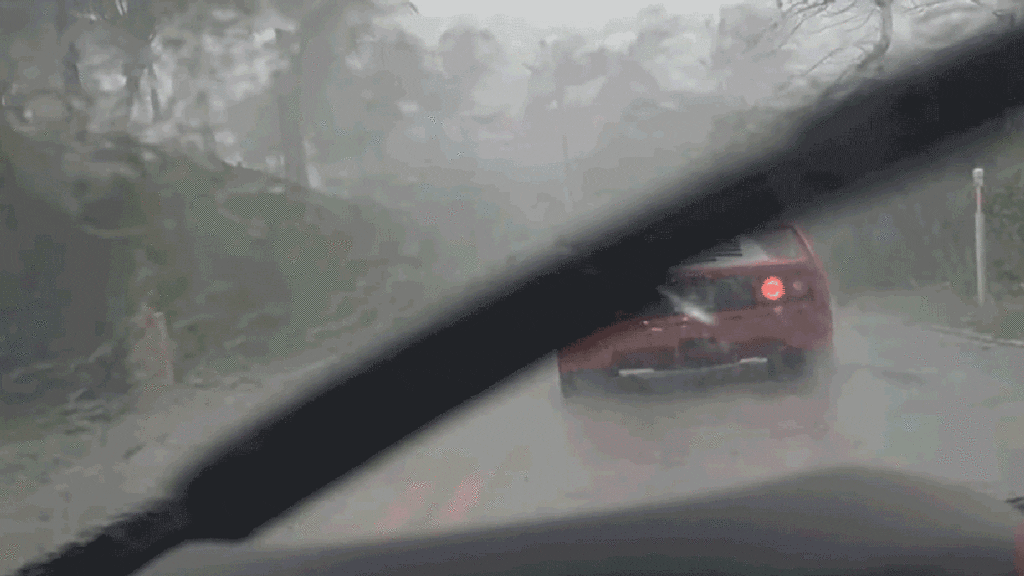Category 6 Hurricanes Are Here With Wind Speeds Faster Than A Ferrari

Hurricanes are becoming deadlier as a result of climate change, and scientists are proposing that we should add another category to the scale used to measure storm intensity. Hurricanes are classified by categories one through five on the Saffir-Simpson Scale, but a recent study says a Category 6 is needed now that storms are intensifying and reaching wind speeds over 192 miles per hour.
Michael Mann’s Ferrari Is A Great Car Movie
The study comes from the Lawrence Berkeley National Laboratory. Its authors argue that our current scale’s Category 5 is no longer adequate to convey the destructive potential of storms such as Hurricane Patricia, which saw wind speeds of up to 215 mph in the Gulf of Mexico. Category 5 begins at 157 mph, leaving a 58 mph gap between the start of Category 5 and some recent storms, which is too great of a difference, as scientists tell the Guardian:
Over the past decade, five storms would have been classed at this new category 6 strength, researchers said, which would include all hurricanes with sustained winds of 192mph or more. Such mega-hurricanes are becoming more likely due to global heating, studies have found, due to the warming of the oceans and atmosphere.
Michael Wehner, a scientist at the Lawrence Berkeley National Laboratory in the US, said that “192mph is probably faster than most Ferraris, it’s hard to even imagine”. He has proposed the new category 6 alongside another researcher, James Kossin of the University of Wisconsin-Madison. “Being caught in that sort of hurricane would be bad. Very bad.”
As Micheal Wehner told reporters, the wind speeds of a hypothetical Category 6 hurricane would exceed the top speed of “most Ferraris.” As car enthusiasts this sets off alarms in our heads, leading us to reconsider the question we all asked ourselves in sixth-grade science lab: could a Ferrari outrun a hurricane?
Well, if you lived in America’s Tornado Alley, you likely asked if a Ferrari could outrun a tornado, but this still applies to you.
It would seem like 192 mph is no match for an Italian supercar, but, lest we forget, winds at such speeds are no laughing matter. For reference, here is an illustration of the destruction wrought by winds on the Saffir-Simpson scale:
Hurricane Wind Damage: Saffir-Simpson Scale
Some Ferraris will easily exceed 192 mph, including the LaFerrari, which has a top speed of 218 mph. Many Ferrari models, however, have a top speed under the 192 mph threshold cited by Wehner. The researchers are technically right, lending credence to their claims. But what makes their finding — and Category 6 hurricanes — that much scarier is that we’re talking about sustained wind speeds. Even if you were in a Ferrari, pedal pinned to the floor, you couldn’t outrun a hurricane forever.
Research shows that superstorms faster than supercars are becoming more common as global bodies of water get hotter. There aren’t more hurricanes due to climate change, but those that develop are now stronger. So far, these recent storms could be classified as Category 6 hurricanes, per the Associated Press:
— 2013’s Haiyan, which killed more than 6,300 people in the Philippines.
— 2015’s Hurricane Patricia, which hit 215 mph (346 kph) before weakening and hitting Jalisco, Mexico.
— 2016’s Typhoon Meranti, which reached 195 mph before skirting the Philippines and Taiwan and making landfall in China.
— 2020’s Typhoon Goni, which reached 195 mph before killing dozens in the Philippines as a weaker storm.
— 2021’s Typhoon Surigae, which also reached 195 mph before weakening and skirting several parts of Asia and Russia.
The researchers go on to say that they are aware of the Saffir-Simpson’s scale other limitations, as Eos reports. They know it may be hard to officially change the decades-old scale.
For starters, the scale measures sustained wind speeds rather than all other hazards that end up killing people and destroying property, including storm surge, rainfall, tornadoes and rip currents. The scientists say that, above all, they want to show that our current systems of measure are just not cutting it anymore due to climate change.
Photo: NASA


